Dehydrating Kale and Make Kale Powder
Today it’s all about making that dark green kale powder, you know that superfood we keep hearing about? Those who are on blood thinners may not be able to use this powder. Just giving you the head up, here.
Have you seen this: AARP Healthy Living: “A word of caution: Kale is very high in vitamin K, known as the clotting vitamin because, without it, blood won’t clot properly.
If you are taking blood-thinning or anticoagulant drugs, like warfarin (brand name Coumadin), you need to avoid large amounts of kale.”
How To Dehydrate Kale
Step One
The first thing you do is wash the kale, and pat it dry. Then you remove the leaves from the rib of the kale. The rib section doesn’t blend up well, and the flavor is too strong and rooty for me to enjoy.
It’s quite easy to just pull the leaves off the rib, or you can use a knife to cut away the leaves.
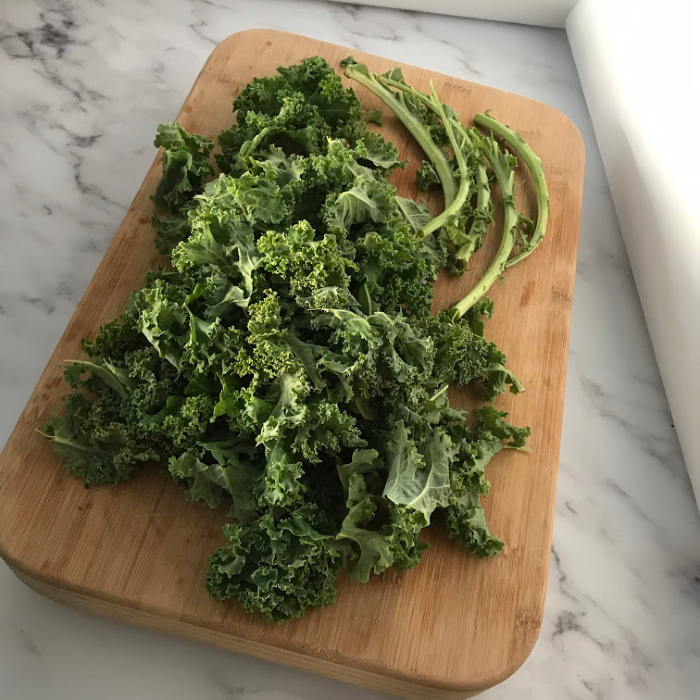
Step Two
Now you place the leaves on the dehydrator rack spacing them so they do not touch one another. My Excalibur Dehydrator states the temperature should be set at 125 degrees.
Please check your dehydrator to confirm the temperature required for your unit.
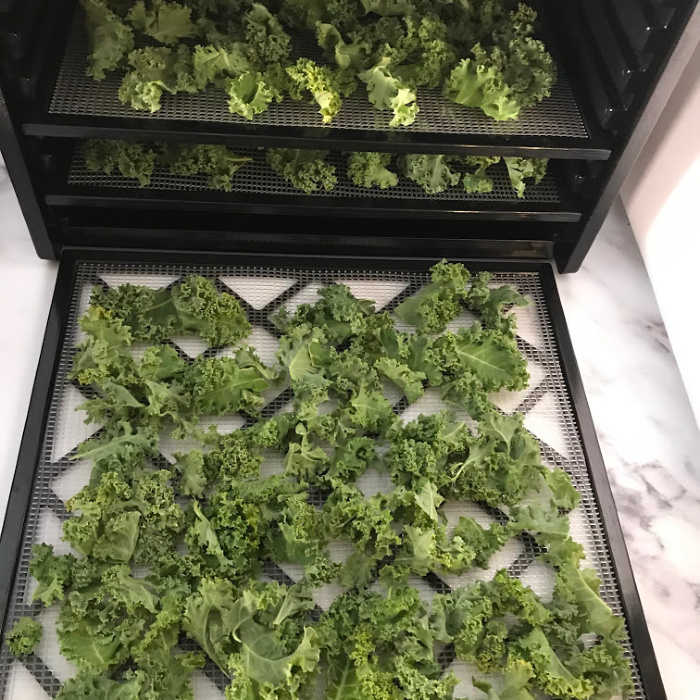
Step Three
Here is the finished product. I’ll let it sit overnight and make kale powder tomorrow. It took 2-3 hours today to make it to the crisp stage.
I never put my dehydrated food immediately in jars because I want to make sure it is totally dry.
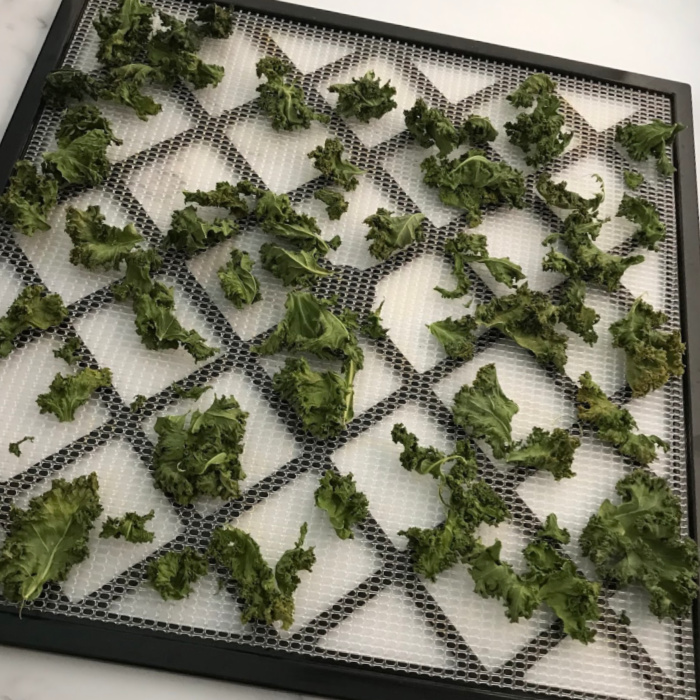
How To Condition Your Fruit or Vegetables
If you live where it is HUMID: “To condition the fruit, take the dried fruit that has cooled and pack it loosely in plastic or glass jars. Seal the containers and let them stand for 7 to 10 days. The excess moisture in some pieces will be absorbed by the drier pieces. Shake the jars daily to separate the pieces and check the moisture condensation.” https://nchfp.uga.edu/how/dry/pack_store.html
I live in the DRY DESERT: I set my fruit and vegetables on my countertop for 5-7 days. Ten days is even better to make sure everything is dry before using your FoodSaver unit.
How To Make Kale Powder
Step One
You will need to dehydrate some kale as shown above and then you can make powder. I filled my Vitamix blender and ground the dried leaves up really fine.
This pitcher is holding 2 bunches of fresh kale that’s been dehydrated.
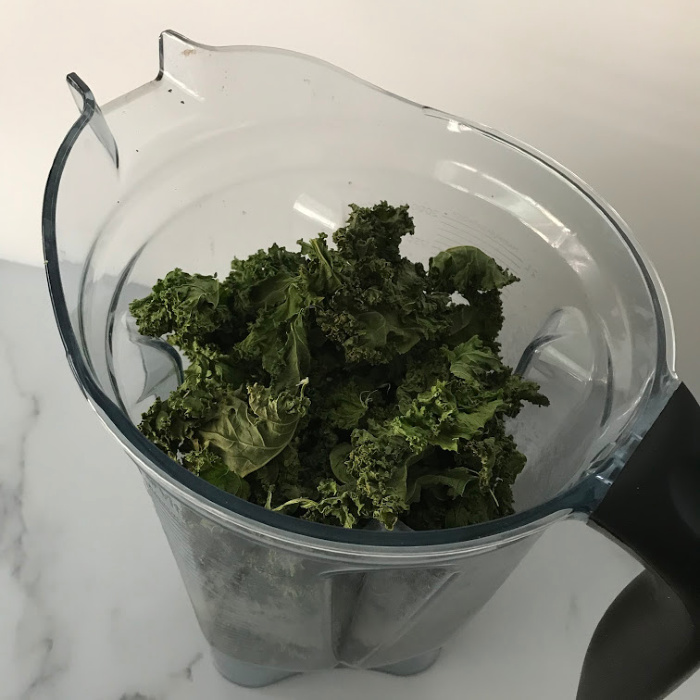
Step Two
Now, that the leaves have been dehydrated you are ready to make kale powder. What’s really nice about the powder is that you can add it to so many things.
This jar below has about one cup of kale powder made from two dehydrated bunches of fresh kale.
This is why it’s so important to learn how to make a powder out of the fruits and vegetables we can dehydrate. The powders take up very little space on our pantry shelves.
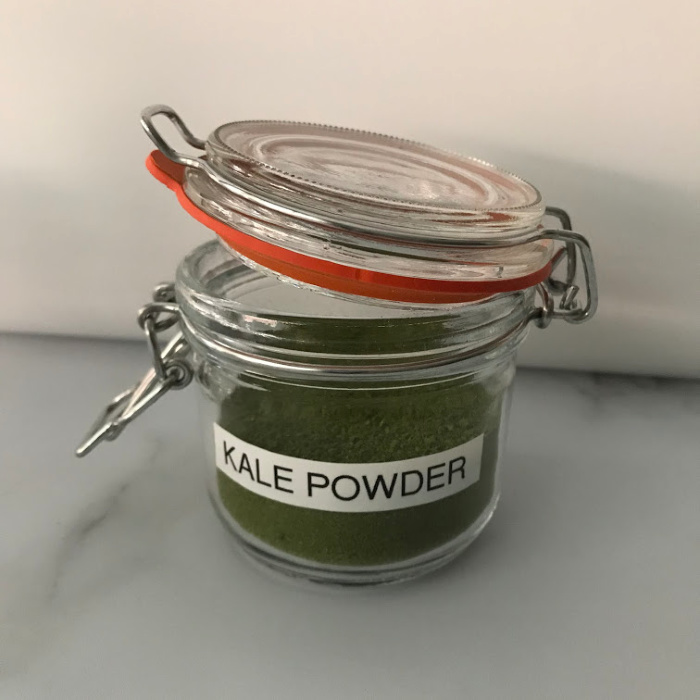
Step Three
I don’t use my FoodSaver to suck the air out because it may damage the FoodSaver. A FoodSaver does not work well with any powder. Just giving you the heads up here.
What Is The Shelf-life?
As a Master Canner, Preserver I can’t say how long it will last. I only make enough powder for a week at the most. It takes very little Kale Powder in your morning smoothie.
Please remember to be careful using your FoodSaver when using the accessory hose for any powder.
It may get sucked up into the hose and damage your machine. I never use my FoodSaver for any powder I make. Ever.
Is Kale Healthy For Me?
Per Web, M.D. I quote: “At just 33 calories, one cup of raw kale has:
- Nearly 3 grams of protein
- 2.5 grams of fiber (which helps manage blood sugar and makes you feel full)
- Vitamins A, C, and K
- Folate, a B vitamin that’s key for brain development
- Alpha-linolenic acid, an omega-3 fatty acid. (While kale has far less omega-3 than fish, it is another way to get some of this healthy fat into your diet.
- Lutein and zeaxanthin, nutrients that give kale its deep, dark green coloring and protect against macular degeneration and cataracts
- Minerals including phosphorus, potassium, calcium, and zinc”
Types of Kale
- Kamome Red
- Lacinato (Dino Kale)
- Premier
- Redbor
- Red Russian
- Siberian
- Walking Stick
How Do I Use Kale Powder?
- Melt butter and mix with Kale Powder and sprinkle over popped popcorn.
- Add to smoothies.
- A great addition to soups or stews.
- It’s a perfect addition when cooking rice.
- Sprinkle over salads.
- Add a sprinkle to cooked vegetables.
- Mix in with mashed potatoes.
- Meatloaf
- Scrambled eggs
- Quiches
Can I Dehydrate Kale In My Oven?
Yes, you can. You do not have to have a dehydrator to dehydrate food. Set your oven to the lowest temperature on your brand of oven. The lowest setting on mine is 170 degrees.
Place the kale on a cookie sheet and place it in your oven. Just follow the instructions above. You need to prop the oven door open with a chunk of foil to keep the door ajar. You must check it every 15 minutes or so because it will dehydrate it very fast.
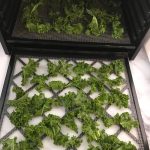
- Fresh Kale
-
The first thing you do is wash the kale, and pat it dry. Then you remove the leaves from the rib of the kale. The rib section doesn’t blend up well, and the flavor is too strong and rooty for me to enjoy.
It’s quite easy to just pull the leaves off the rib, or you can use a knife to cut away the leaves. Now you place the leaves on the dehydrator rack spacing them so they do not touch one another. My Excalibur Dehydrator states the temperature should be set at 125 degrees.
Please check your dehydrator to confirm the temperature required for your unit.
It took 2-3 hours today to make it to the crisp stage. I’ll let it sit overnight and make kale powder tomorrow.
I never put my dehydrated food immediately in jars because I want to make sure it is totally dry. I filled my Vitamix blender and ground the dried leaves up really fine to make Kale powder.
Here are the other Dehydrating Posts I have done:
- Dehydrating Apples
- Dehydrating Bananas
- Dehydrating Blackberries and Powder
- Dehydrating Blueberries and Powder
- Dehydrating Cilantro
- Dehydrating Cucumbers and Powder
- Dehydrating Ginger and Powder
- Dehydrating Green Onions and Powder
- Dehydrating Kale and Kale Powder
- Dehydrating Kiwi
- Dehydrating Lemons and Powder
- Dehydrating Marshmallows
- Dehydrating Peppermint Marshmallows and Powder
- Dehydrating Mushrooms and Mushroom Powder
- Dehydrating Onions and Powder
- Dehydrating Pears
- Dehydrating Pineapple
- Dehydrating Raspberries and Powder
- Dehydrating Spinach and Powder
- Dehydrating Strawberries
- Dehydrating Tomatoes and Powder
- Dehydrating Watermelon
Final Word
Have you wanted to know how to make kale powder? I’ve made it for years and decided I needed to share it on my blog so others can see how easy it is to make.
I love looking at the jars on my pantry filled with fruits and vegetables I have preserved so many different ways. You may know I don’t like to shop at the grocery stores, so I have my own mini-store right in my home.
Please keep prepping, we must keep going. We can do this, I promise. May God bless this world, Linda

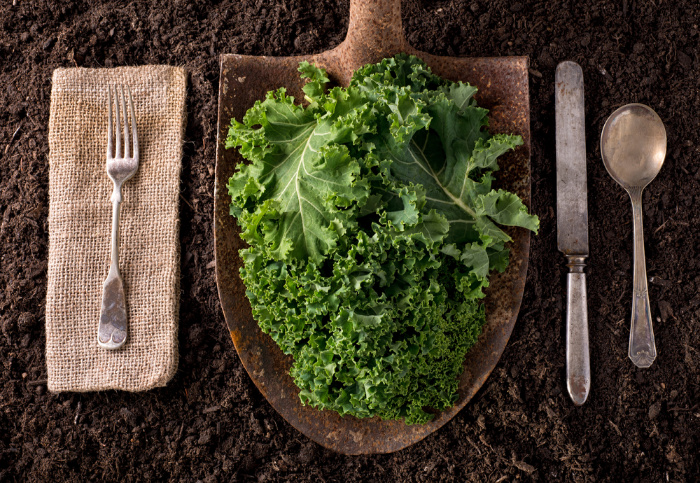


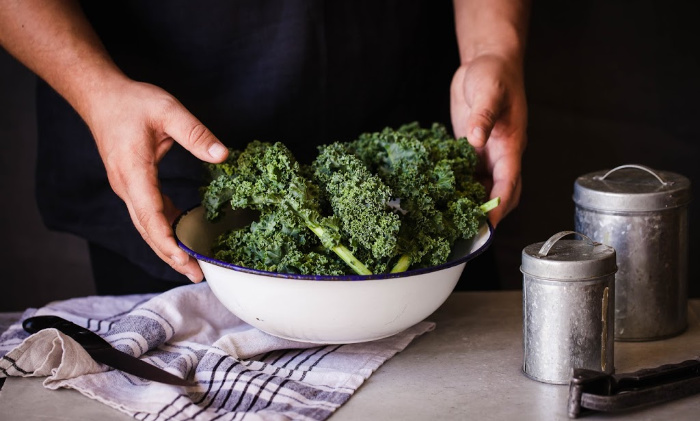
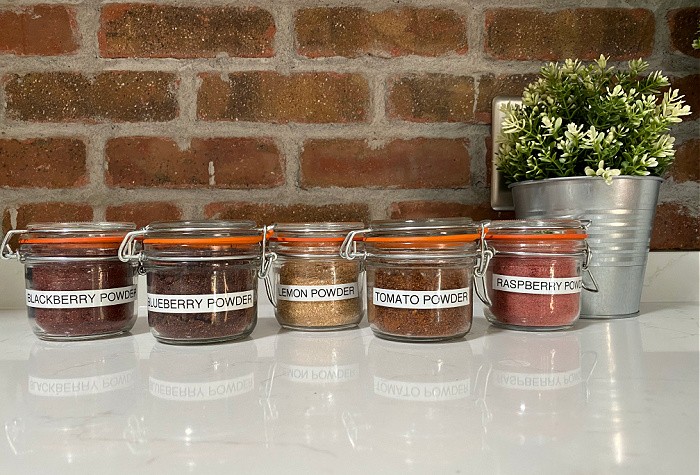
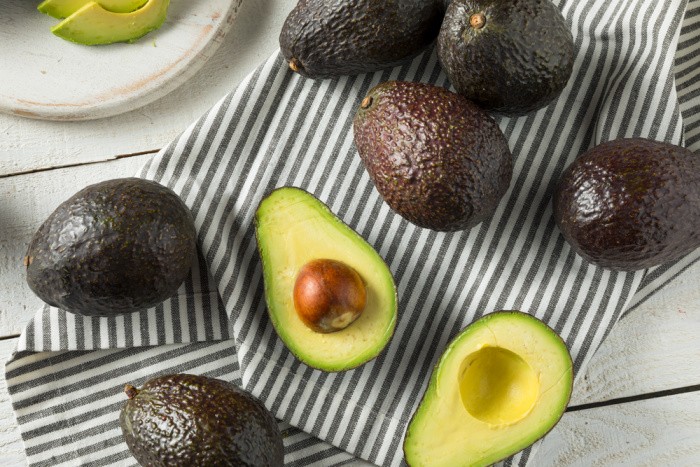
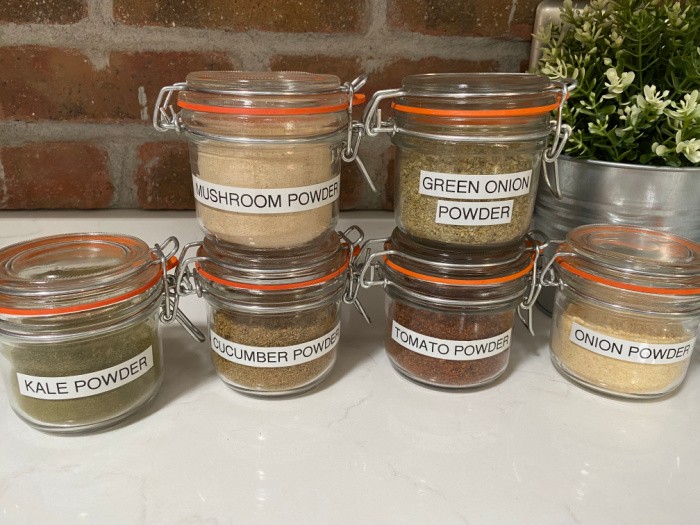














How do you dehydrate in oven… and in humid climates?
Hi Wendie, thank you for reminding me I always put how to dehydrate with an oven. I do not know about humid areas I live in the desert so it may be different than where you live. You set your oven to the lowest temperature on your oven. Place the kale on cookie sheets and use a chunk of foil to keep the oven door ajar. You will have to watch it very often because it will dehydrate very fast. Linda
Linda, can you do this same thing with beets and if so, how thick should the slices be? Hey, did you notice my short comment? lol.
Hi Pam, I didn’t see your short comment. LOL! Well, I grabbed my Excalibur Dehydrator book. The beets take a little bit more work. They have to be steamed, then sliced and dehydrated at 125 degrees. They will bleed (drip) all over the place my book says. You can slice them or shred them. Too messy and too much work for me. LOL! Linda
Hi Linda. Thanks for the info. Yes, it does sound like more work than I’m willing to do, lol. I was curious though. I’ve read that beets have great health benefits and was wanting to add more of them into my diet even though they are on the “no no” list (except in moderation) for Keto. But, I’ve been eating this way long enough they won’t hurt my daily carbs and I can fit them in easily. Besides, I love beets, especially pickled. Again, THANKS!
I also have powdered stuff for years and always wondered why it was not discussed more often using the process you high-lighted. My variations are: I now dehydrate at the lowest setting possible,just longer. Heat destroys certain nutrients I want and need in the finale powder. I do not let my product set overnight. It will re-hydrate from relative humidity. If it breaks clean or powders in the palm of my hand coming out of the dehyrator,it is as dry as it needs to be so it is ground immediately. And last, I do vacuum seal everything{air is second leading cause of spoilage or reduced storage viability} and powder has never stopped up my 6 year old sealer. I even reseal after removing product for use. I solve the reseal inconvenience issue by having a large and small storage jars of the same product and making a large quantity of everything to be powdered when it is cheapest or abundant
Hi Jerry, great comment today! I’m glad to hear you haven’t had a problem using the accessory hose on your jars. I was teaching a class at Honeyville Grain in SLC, Utah and the instructor before me ruined her FoodSaver. I love your tips!! Linda